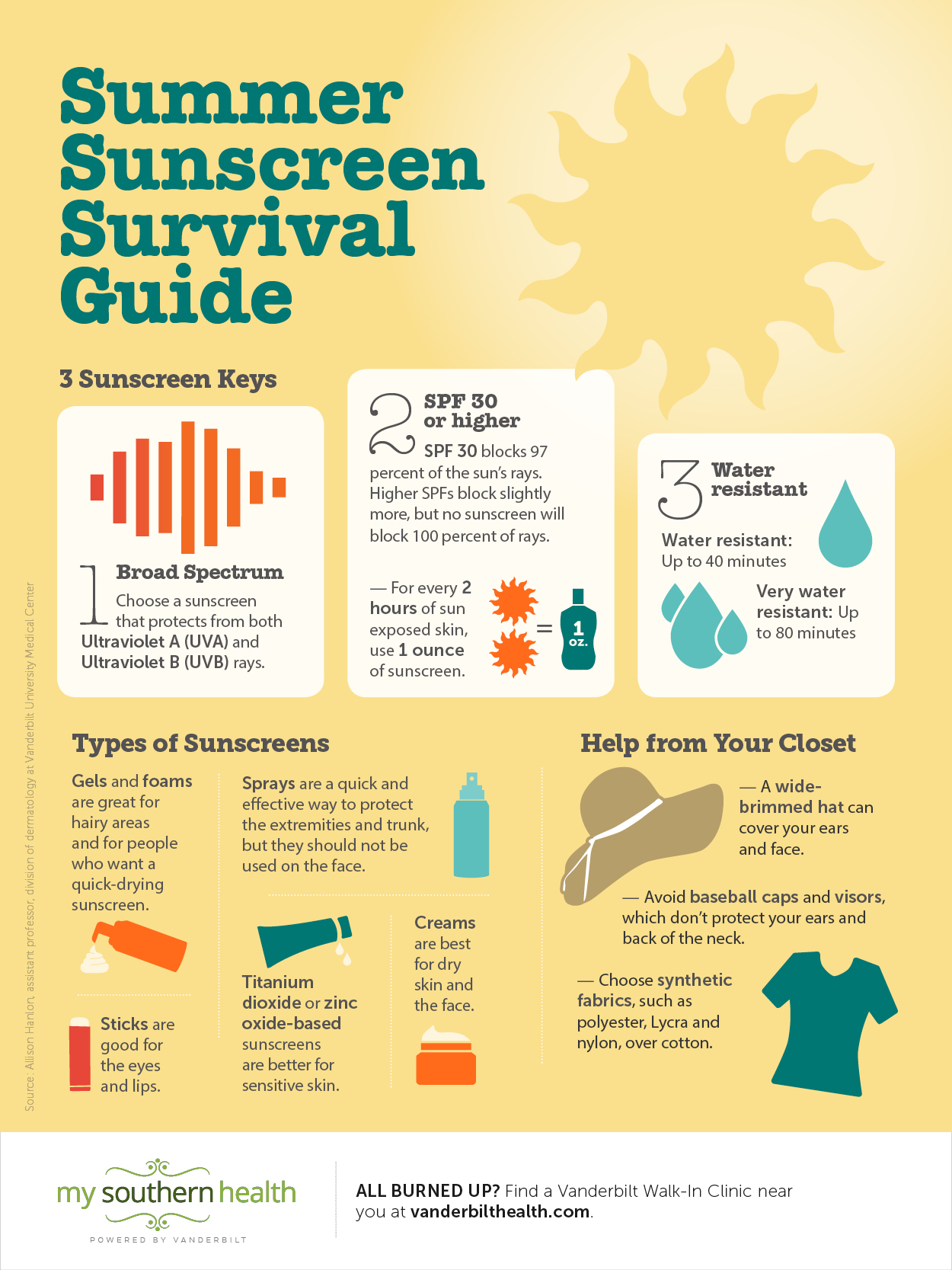
A Vanderbilt doctor shares what you need to know to stay covered this season.
Biking Nashville’s greenways, hiking to a beautiful waterfall, hanging out in Centennial Park — there are countless great activities to do outside this summer. But no matter what you decide, you’ll want to use sunscreen correctly to protect yourself from the harmful rays of the sun.
Allison Hanlon, M.D., assistant professor, Division of Dermatology at the Vanderbilt University Medical Center, walked us through the top sunscreen tips to remember when it comes to choosing and applying a sunscreen.
What should I look for on the sunscreen label and ingredient list?
When choosing a sunscreen, one should look at three key statements on the label:
- Broad-spectrum sunscreen;
- SPF 30 or higher; and
- Water resistant.
A broad-spectrum sunscreen protects from both Ultraviolet A (UVA) and Ultraviolet B (UVB) rays, both of which are associated with skin cancer. UVA rays can pass through window glass, whereas UVB are blocked by windows. Both UVA and UVB can cause skin cancer but UVA is more associated with the development of premature skin aging such as wrinkles and sunspots. UVB can cause sunburns. A broad spectrum sunscreen will protect against both UVA and UVB rays, which is important for good skin care and health.
Water resistant and very water resistant are important label statements to look for in choosing a sunscreen. Previous terms like waterproof and sweatproof sunscreens are now banned as the FDA found them to be misleading. Water resistant means that the sunscreen is effective for up to 40 minutes in water/sweating, while very water resistant is effective for up to 80 minutes in water/sweating. I recommend to my patients that even if they were wet for a shorter period than listed on the labeling, to reapply their sunscreen after swimming, sweating or especially towel drying.
What SPF level should I use?
The American Academy of Dermatology recommends an SPF of 30 or higher, which blocks 97 percent of the sun’s rays. Higher number SPFs block slightly more of the sun’s rays, but there is no sunscreen that will block 100 percent of the sun’s rays.
Most important, is that whether the SPF is 30 or 100, the sunscreen lasts for about the same duration. So, a higher number SPF does not equal a longer time of protection. Save your money with an effective SPF of 30.
Does sunscreen go bad?
I recommend first to check the dates on the sunscreen they already have at home. Sunscreen does expire, so discard any with expired dates. If there is no expiration date on the bottle, there are some signs that the sunscreen may no longer be good. Obvious changes in the color or texture of the sunscreen mean the sunscreen is no longer protective.
What kind of clothes should I wear to protect myself from the sun?
The weave of the fabric is important in determining how protective the clothes are from the sun. Raising the fabric to a light and seeing how much light is transmitted through the fabric can indicate how protective the clothing is from the sun’s rays.
Synthetic fibers such as polyester, Lycra and nylon are more protective than bleached cottons or semi-synthetic fabrics like rayon. Clothing that has UPF labels have been tested to quantify how effective it shields against the sun. For instance, a UPF of 50 means 1/50 of the sun’s rays can penetrate through the clothing. A basic white cotton T-shirt gives an Ultraviolet Protection Factor (UPF) of about 8. When wet, a cotton T-shirt UPF is 3.
Sun-protective clothing is more available now and is a great option not only for swimming but also other outdoor activities — gardening, golf and hiking. Some fabrics even wick away sweat so despite the long sleeves, the shirts can be cooling.

